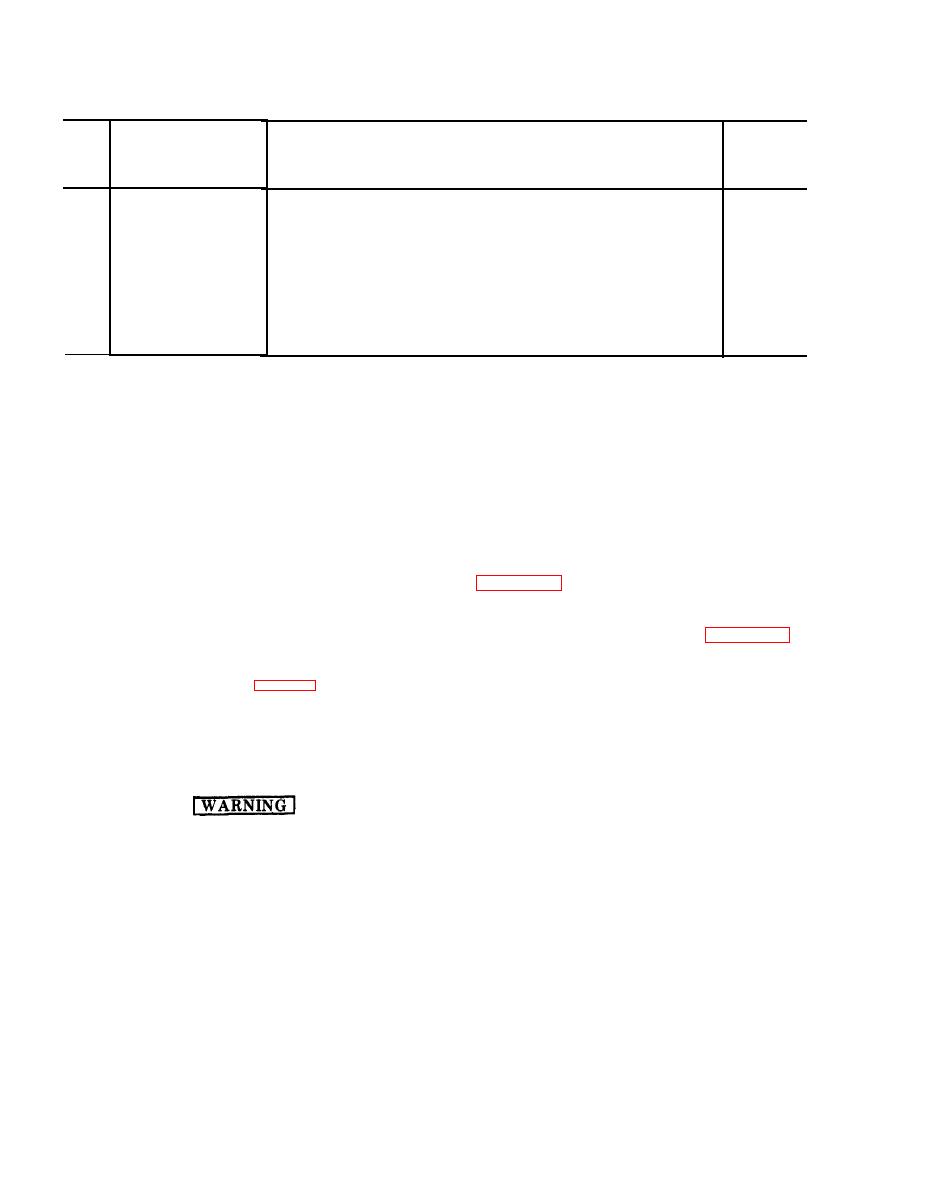 |
|||
|
|
|||
|
Page Title:
Table 3-2. Freezing Points, Composition, and Specific Gravities of Military Antifreeze Materials |
|
||
| ||||||||||
|
|
 TM 10-3930-633-12
Lowest
Pints
Ethylene glycol
Compound antifreeze
expected
inhibited
coolant solution
2
Artic
ambient
glycol per
specific gravity
temp.
gal. of
at 68 F3
coolant 1
F
1
-20
Issued
full
strength
and
ready
mixed
for
0
to
65
F
temperatures
for
both
1.022
+10
2
initial
installation
and
replenishment
of
losses.
1.036
2
0
1.047
-10
3
1.055
3
-20
1.062
-30
4
1.067
4
40
DO NOT DILUTE WITH WATER OR ANY OTHER SUBSTANCE.
Arctic antifreeze preferred
50
60
72
1
Maximum projection is obtained at 60 percent by volume (4.8 pints of ethylene glycol per gallon of Solution).
2
Military Specification MIL-C-11755 Arctic type, nonvolatile anti-freeze compound is intended for use in the cooling system of
liquid-cooled internal combustion engines.
It is used for protection against freezing primarily in Arctic regions where the ambient
temperature remains for extended periods close to 40 F, or drops below, to as low as -90 F.
3
Use an accurate hydrometer. To test hydrometer, use l part ethylene glycol antifreeze to 2 parts water. This should produce a
hydrometer reading of 0 F.
b. Hydrometer readings should be used to
determine the battery state of charge. This is
a. When slack develops in brake linkage due to
particularly true in cold weather, as a partially
lining wear, it may be restored by placing lever in
discharged battery may freeze at temperatures up
the full release position, and turning the knurled
to 20 F.
knob on top of the lever several turns clockwise.
c. Take readings on the hydrometer as shown
b. After making the adjustment, recheck brake
in figure 3-2. Battery will need charging if the
action. There should be noticeable tension as the
specific gravity reads 1.225 (or less) at 750 F.
lever passes t h e over-center position. If
Correct the hydrometer reading according to the
necessary, repeat adjustment
ambient temperature as shown by figure 3-2.
NOTE
CAUTION
If brake effectiveness cannot be restored by the
Specific gravity should be 1.265 or
above adjustment, a major adjustment or relining
of the brake is, required, See Chapter 4.
greater if battery is exposed to freezing
temperatures. If machine is operated in
tropical climates where no freezing
a. Check battery electrolyte level frequently,
weather is encountered, the full charge
especially in hot weather. Maintain the level at `/2
specific gravity may be lowered from
inch over the top of the plates by adding distilled
1.375 to 1.225 by diluting the electrolyte
water, when necessary.
with distilled water.
NOTE
Never allow sparks or open flame in the
Do not add distilled water to electrolyte im-
area when checking the battery. Storage
mediately after charging the battery.
b a t t e r i e s produce hydrogen, an ex-
plosive gas, as a normal by-product of
operation.
|
|
Privacy Statement - Press Release - Copyright Information. - Contact Us |